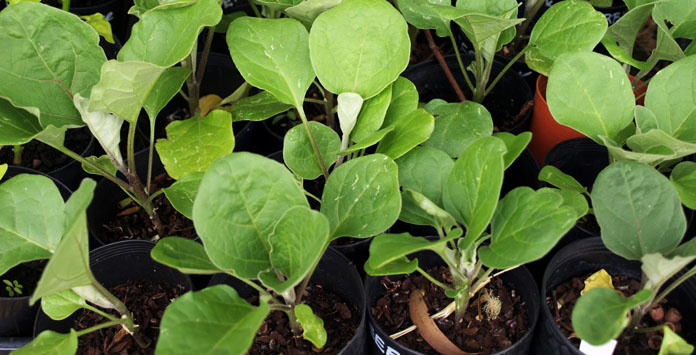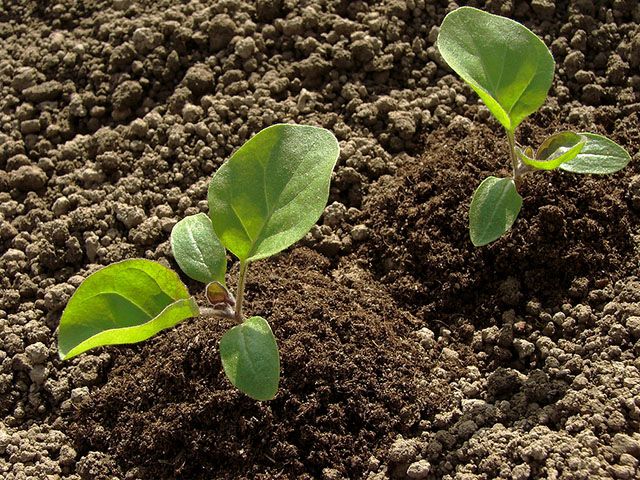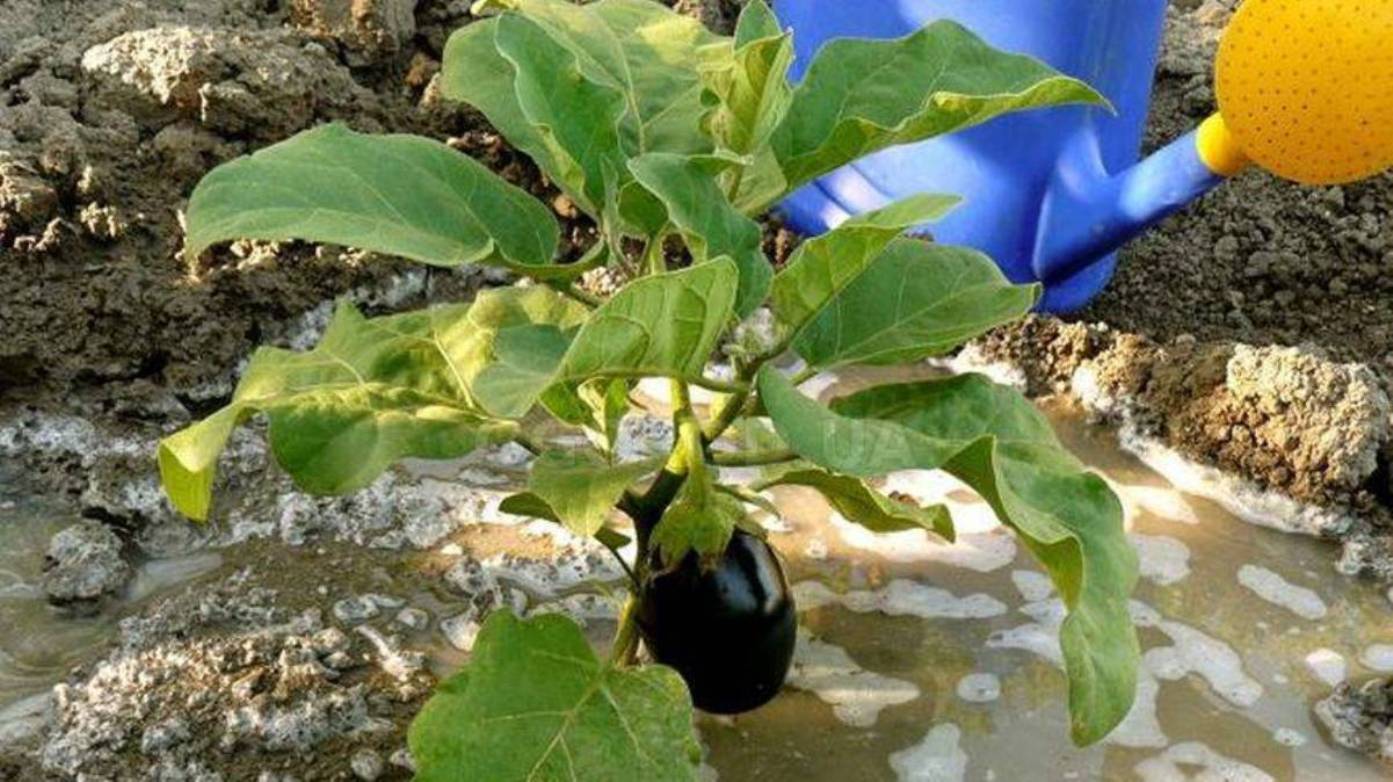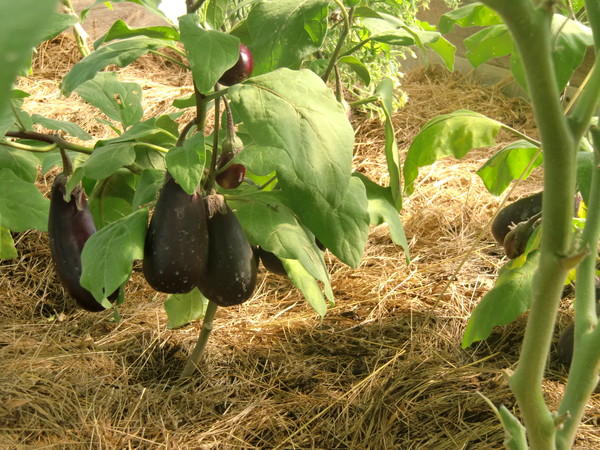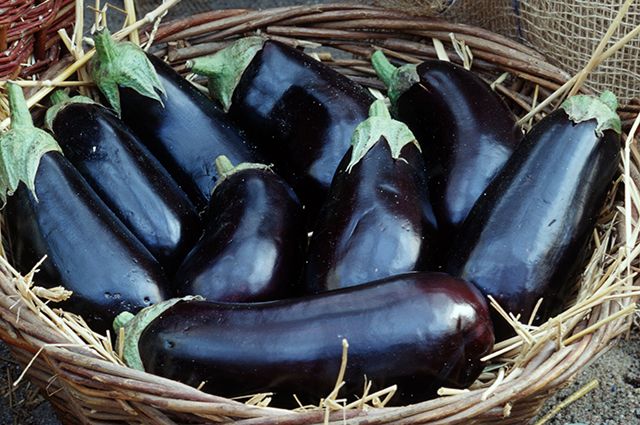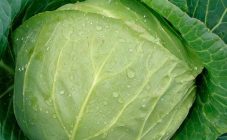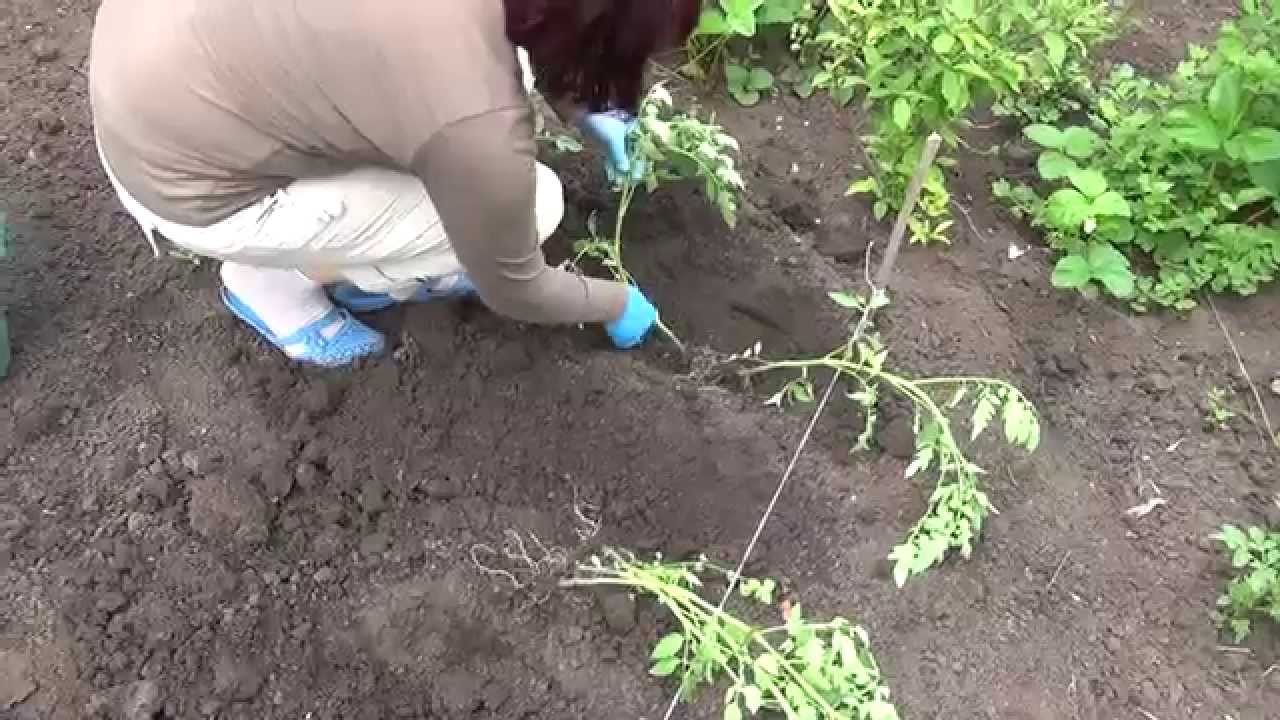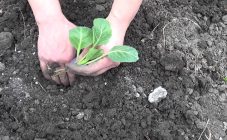Content:
Eggplants have long been cultivated in the countries of Southeast Asia. The homeland of the plant is India, and in Russia they began to be grown in the 17th century. The popularity of blue fruits is attributed not only to its exquisite taste, but also the ability to normalize heart activity and lower cholesterol levels.
Eggplants belong to nightshade crops, but in comparison with others, they are the most heat-loving, more capricious and have their own nuances of cultivation. The most important question is when to plant eggplants in the ground.
How eggplants are planted in open ground
In most regions of Russia, only the seedling method of growing eggplants is possible. When sowing eggplant seedlings, it is recommended to use the lunar planting calendar for a particular year. Sowing is planned in February - March, in order to replant seedlings at the age of 60-70 days. When to plant eggplants in open ground depends on the weather conditions and the local climate.
Vegetables are afraid of frost and drafts, so you can plant eggplants in the ground when there is no threat of the return of night frosts. For eggplants, the minimum steady-state temperature is from + 15 ° С at night. Usually such conditions are created from late May to mid-June.
Seedlings ready for transplanting should be 15-20 cm tall, have 5-7 leaves and several buds. Naturally, eggplant seedlings should be healthy in appearance. Good results are noted when growing seedlings in peat pots: when transplanting, the roots of the seedling are not damaged, the young plant quickly adapts and begins to bear fruit earlier.
Before transplanting, it is necessary to prepare the soil. Eggplants prefer light, neutral and fertilized soils; they grow well on loam and sandy loam. In the event that the soil is "heavy", it is "lightened": in the fall, when digging, peat and humus are added, mixed with sawdust, sand or chopped straw.
Peat, clay soil and sawdust are mixed into sandy soils. If the site has peaty soil, then it is dug up with turf soil and humus. It is also important to think over the crop rotation in advance:
- The best predecessors are pumpkin seeds - cucumbers, melons, pumpkins, can be planted after onions, cabbage and legumes.
- In the area after other nightshades, eggplants will not grow well. Plants of the same family have the same needs and diseases.
Humus and ash should be added to the prepared planting hole.
The soil in the cup is well moistened so that the seedling can be easily removed, keeping an earthen lump. The seedling is placed in a planting hole filled with water to a depth of about 10 cm. The root collar deepens by 1.5-2 cm. After transplanting, the soil needs to be tamped and mulched a little.
The first days after transplanting, the seedlings must be shaded, even if they have already been accustomed to the sun. So the plants will quickly survive stress, take root and begin to develop.
In regions with a warm climate, it is possible to plant seeds directly into the ground when the soil temperature reaches + 15 ° C.The seeds are germinated and dried a little, after which they are sown in rows, initially using a film cover of the beds.
Landing rules
The first step is to figure out when you can plant young eggplant seedlings in open ground. The best option involves a careful study of the weather forecast, because in central Russia, even at the end of summer, there is a high probability of night frosts. And an attempt to plant plants in frozen ground is completely doomed to complete failure.
If you plan to plant eggplant seedlings in the beds, then you need to take care of the shelter. You can use the film by pulling it on arcs. Young seedlings are kept in shelter around the clock, and later, as it warms, they are sheltered only at night.
- The landing site is chosen sunny, without drafts.
- The ridges are dug up in autumn and urea and superphosphate are added.
- Humus and ash are added in the spring, potassium chloride can be added.
- Planting scheme: for high varieties - 50 cm between plants, 60 cm between rows; for low varieties, respectively, 10 cm less.
- Normal planting involves placing 3-6 plants per 1 sq. meter.
The temperature that eggplants withstand in the open field day and night determines the characteristics of their agricultural technology. The best temperature for the life of eggplants is + 25-28 ° С. At + 20 ° C, plant growth is inhibited. Given the thermophilicity of the culture and the cool summer in most of the territory of our country, it makes sense to transplant the eggplants into a polycarbonate greenhouse.
Greenhouse material, heated in the sun, retains heat at night. Transplanting dates are shifted to early-mid May. The greenhouse must be ventilated to avoid overheating and the development of fungus. The windows and doors should be opened from one side to avoid creating a draft. Soil preparation and the technique of planting seedlings in a greenhouse does not differ from open ground.
Further care, cultivation techniques
Caring for eggplants is much easier than for tomatoes or cucumbers: you should follow the watering and feeding regime, fight weeds and pests.
Watering
Eggplant is a moisture-loving culture. Lack of moisture will certainly affect the life of plants and productivity: plants will begin to shed buds and ovaries.
Water the plant daily, in the morning or evening. Rare and abundant watering leads to waterlogging of the soil, which leads to disease and depression. It is better to use warm water (+ 25 ° С) for irrigation. Watering with cold water slows down all the life processes of plants.
The first time the seedlings are watered 2-3 days after transplanting, the second time - abundantly after 4 days. After that, they switch to normal watering mode.
Top dressing
Rooted seedlings are fed for the first time after half a month. A solution of ammonium nitrate, superphosphate and potassium chloride is used. Seedlings respond well to organic feeding: a solution of chicken manure or manure with the addition of nitrophoska. Nitrogen is needed to build up the green mass in the early stages.
The second feeding is carried out when the fruit is formed with the same fertilizers with the addition of wood ash.
After 14 days, they feed the third time.
Formation of bushes
When forming a bush, pinch off the top. This is done when the plant reaches 30 cm. 4-5 strongest shoots are left on the main stem, the rest are removed.
Additional care
Throughout the growing season, it is necessary to regularly loosen the soil and remove weeds, while remembering that the roots of the plants are in the upper layers of the soil.
Hilling is an important procedure that promotes the growth of adventitious roots and improves the nutrition of the bush.
The soil under the bushes is mulched with peat, straw, hay. This is done to retain moisture and prevent weed growth.
To avoid the fall of flowers and ovaries, plants are treated with boric acid three times per season.
Eggplants have bisexual flowers and are capable of self-pollination. If there is little air movement (especially in greenhouses), you should regularly shake the bushes so that the pollen gets on the pistils. The participation of insects that "visit" the eggplant flowers cannot be ruled out: these are bees and bumblebees.
The formation of small and ugly fruits is observed:
- on acidified soils;
- at low daytime temperatures;
- poor access to light;
- poor watering;
- excess nitrogen in the soil.
Diseases and parasites
Like all cultivated plants, eggplants are susceptible to various diseases and attack by parasites:
- Thickened plantings, low temperatures and excessive moisture lead to the development of black leg. This is a fungal disease that affects the root collar and leads to the death of young plants. By observing the technology of watering and planting, this disease can be avoided.
- All parts of the plant are susceptible to black spots, when black spots with a yellow rim appear on them, which increase in size. To combat the disease, the drugs "Zaslon" and "Fitoflavin" are used, the affected plants are destroyed, and the tops are burned in the fall after harvesting.
- Mosaic disease virus is transmitted through soil and seeds, therefore, it is necessary to decontaminate them before planting. The disease manifests itself as patterns on the leaves and yellow spots on the fruits. Infected plants should be destroyed, the rest should be treated with "Zircon" or "Fitosporin".
- Gray rot is a fungus that usually affects dying plant parts. But with temperature surges and excessive watering, healthy bushes can also get sick.
- White rot develops with excessive watering, watering with cold water aggravates the disease. The fungus affects the stem, on which a white bloom appears, it becomes watery.
- Late blight is the trouble of all nightshades. This fungal disease causes leaf loss and plant death. Strong morning dew in the beds, prolonged rains, high humidity in the greenhouse, sudden temperature changes are the reasons for the development of the disease.
- High humidity and lack of lighting also lead to the development of internal necrosis of the fruit.
- Of parasitic insects for eggplant, aphids, spider mites, whiteflies and Colorado potato beetles are dangerous. Insects feed on plant juices or gnaw leaves, ovaries and fruits. In almost all cases, if measures to combat the pest are not taken in time, the plants die. For the destruction of parasites and for preventive purposes, special preparations are recommended that are approved for use in summer cottages. There are many popular methods of exterminating parasites that exclude the use of chemistry.
Eggplant grows very slowly, especially during the initial growing season. Harvesting should be at the stage of technical ripeness: the fruits have a strong glossy shine, are easy to cut, and the seeds do not darken. In most varieties, even early maturing, this stage occurs at 85-100 days. But you can start selective collection after 40 days of plant life. Fruits harvested too early will have a bitter taste. The brown color of the fruit indicates that it is overripe.
Each bush, with proper care, can produce 10-20 eggplants. At the same time, there is a dependence - the smaller the fruits, the larger they are. You need to remove the eggplant every 5 days, otherwise the ripe fruits will not ripen the next. The fruits are cut with pruners so as not to break off the entire shoot. Sometimes, by the end of the season, large ovaries remain on the bushes. Such plants can be transplanted into pots and wait for the fruits to ripen at home.
The harvested crop is used immediately, since eggplants do not ripen, like tomatoes, and during storage they become sluggish and soft. You can save fresh fruits for some time by creating special conditions for them.
Having studied agricultural techniques and observing all the rules for growing "blue" fruits, you can grow a good harvest of high-quality and healthy vegetables. Their use is possible fresh, immediately after the removal of the fetus. But most often they are used in blanks. Eggplant can be stored until winter. To do this, they need to be dried or frozen.

